Introduction
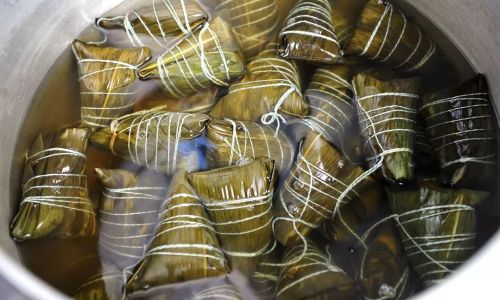
Zongzi, also known as rice dumplings wrapped in bamboo leaves, are a traditional Chinese food associated with the Dragon Boat Festival. This festive delicacy is not only a symbol of unity and tribute to the great poet Qu Yuan but also a culinary delight enjoyed by people across China and in many parts of the world where Chinese culture has influenced. Preparing zongzi involves several steps, from soaking the rice and preparing the fillings to wrapping and boiling them. Among these steps, boiling zongzi in a large pot is crucial to ensure they are cooked thoroughly and develop the desired texture and flavor.
This article aims to provide a comprehensive guide on how long to boil zongzi in a large pot, taking into account various factors such as the size and type of zongzi, the cooking equipment used, and personal preferences for texture and taste. By understanding these factors, you can achieve perfectly cooked zongzi that are both delicious and satisfying.
Understanding Zongzi Types and Sizes
Before diving into the boiling process, it’s essential to understand the different types and sizes of zongzi. Zongzi can vary greatly in shape, size, and filling, which will affect the cooking time. Here are some common types:
-
Sweet Zongzi: These are typically filled with sweet ingredients such as red bean paste, lotus seed paste, or dates. Sweet zongzi tend to be smaller and require less cooking time compared to savory ones.
-
Savory Zongzi: These are filled with savory ingredients like pork, salted duck egg yolks, mushrooms, and peanuts. Savory zongzi are often larger and may contain bones or other hard components that require longer cooking to soften.
-
Plain Zongzi: These are simply made with sticky rice and bamboo leaves, without any additional fillings. They are usually smaller and cook faster.
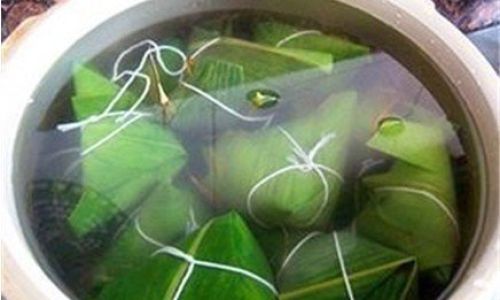
-
Specialty Zongzi: There are also specialty zongzi with unique fillings such as green tea, ice cream, or even western ingredients like cheese and ham. These may require special handling and cooking times.
The size of the zongzi also plays a significant role. Larger zongzi will take longer to cook through, while smaller ones will cook faster. Generally, a standard-sized zongzi (about 5-6 inches in length) will take around 2-4 hours to cook, depending on the method and equipment used.
Preparing the Cooking Equipment
Boiling zongzi in a large pot is the most traditional and effective method. Here are some tips for preparing your cooking equipment:
-
Choosing the Pot: Select a large, heavy-bottomed pot that can hold all the zongzi with enough water to fully submerge them. A heavy-bottomed pot distributes heat more evenly, preventing scorching or uneven cooking.
-
Water Level: Ensure the water level in the pot is high enough to fully submerge all the zongzi. As a general rule, the water should be at least 2-3 inches above the top layer of zongzi. This ensures even cooking and prevents the zongzi from drying out or sticking to the pot.
-
Boiling Water: Start with boiling water before adding the zongzi. This helps to quickly bring the temperature up to cooking levels and reduces the overall cooking time.
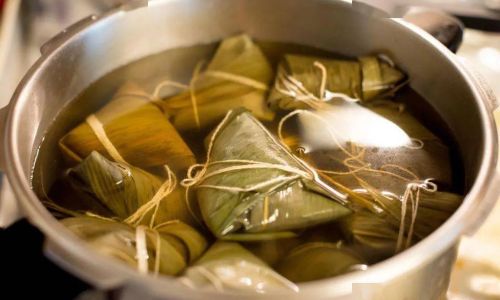
-
Lid and Weight: Use a tight-fitting lid to cover the pot during cooking. This traps steam and heat, ensuring even cooking. Additionally, you can place a heavy object on top of the lid to prevent it from moving and to maintain pressure inside the pot, which can help cook the zongzi faster.
Boiling Zongzi: Step-by-Step Guide
Now that you have your zongzi prepared and your equipment set up, let’s dive into the boiling process. Here’s a step-by-step guide:
-
Preheat the Water: Fill the large pot with water and bring it to a rolling boil over high heat.
-
Add Zongzi: Carefully place the zongzi in the boiling water, ensuring they are not overcrowded. Use a spoon or spatula to gently push them down if they float to the top.
-
Adjust the Heat: Once all the zongzi are in the pot, reduce the heat to medium-low to maintain a gentle boil. This prevents the water from evaporating too quickly and ensures even cooking.
-
Cover and Cook: Place the lid on the pot and, if possible, place a heavy object on top to secure it. Cook the zongzi according to their size and type:
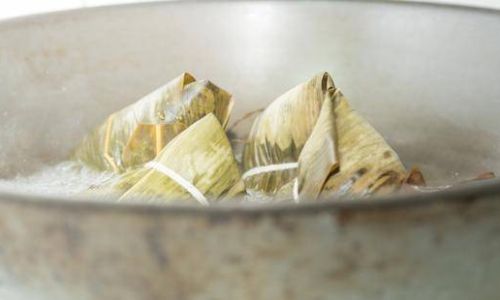
- Small Sweet Zongzi: Approximately 2-3 hours
- Standard-sized Savory Zongzi: 3-4 hours
- Large or Specialty Zongzi: 4-6 hours or even longer, depending on the ingredients
-
Check for Doneness: After the estimated cooking time, carefully remove one zongzi from the pot and let it cool slightly.Unwrap it and check the texture of the rice. It should be tender and sticky, with no hard or uncooked spots. If the rice is still too firm or has hard spots, return the zongzi to the pot and continue cooking for another 30 minutes to an hour, then check again.
-
Final Cooling: Once the zongzi are cooked, turn off the heat and let them sit in the hot water for an additional 10-15 minutes. This helps them to firm up slightly and makes them easier to handle.
-
Serve and Enjoy: Remove the zongzi from the pot using a slotted spoon or tongs and let them drain on a plate or tray. Serve them warm or at room temperature, with soy sauce, vinegar, or other dipping sauces as preferred.
Factors Affecting Cooking Time
Several factors can affect the cooking time of zongzi, including:
-
Size and Density: Larger and denser zongzi take longer to cook through.
-
Type of Filling: Fillings that are harder or require more cooking, such as pork or duck egg yolks, will increase the overall cooking time.
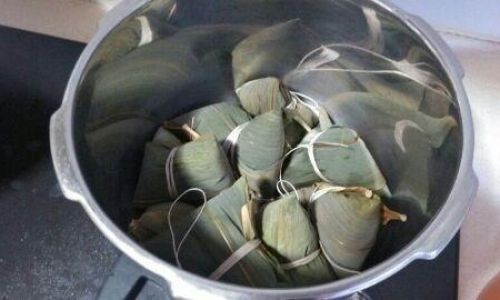
-
Pot Size and Material: A larger pot with good heat retention properties will cook zongzi more evenly and efficiently.
-
Altitude and Climate: Cooking at higher altitudes or in colder climates may require longer cooking times due to lower atmospheric pressure and slower heat transfer.
-
Personal Preference: Some people prefer their zongzi to be softer and stickier, while others like them firmer. Adjust the cooking time accordingly to meet your personal preferences.
Conclusion
Boiling zongzi in a large pot is a time-honored tradition that requires patience and attention to detail. By understanding the different types and sizes of zongzi, preparing the cooking equipment properly, and following a step-by-step guide, you can achieve perfectly cooked zongzi that are both delicious and satisfying. Remember to consider factors such as size, filling, pot material, and personal preference when determining the cooking time. With practice and a bit of trial and error, you’ll soon be an expert at boiling zongzi and can enjoy this traditional delicacy at any time of the year.
Whether you’re celebrating the Dragon Boat Festival or simply enjoying a culinary adventure, zongzi offer a unique blend of flavors and textures that are sure to delight your taste buds. So, gather your ingredients, roll up your sleeves, and get ready to create a memorable feast with these timeless treats. Happy cooking!
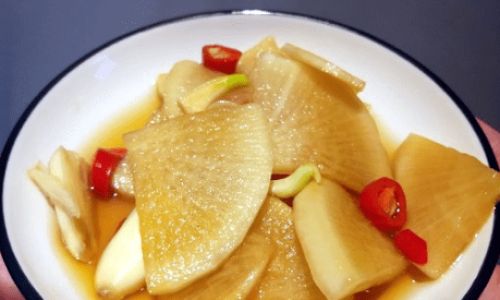
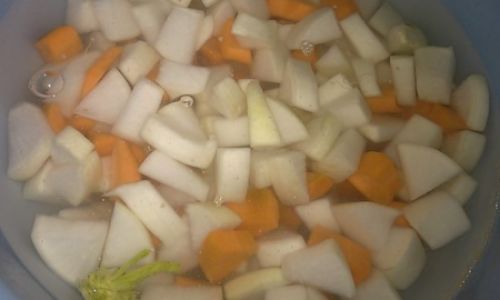
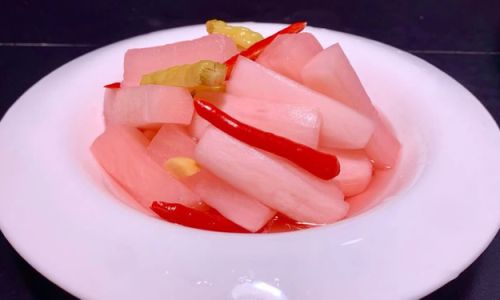



0 comments